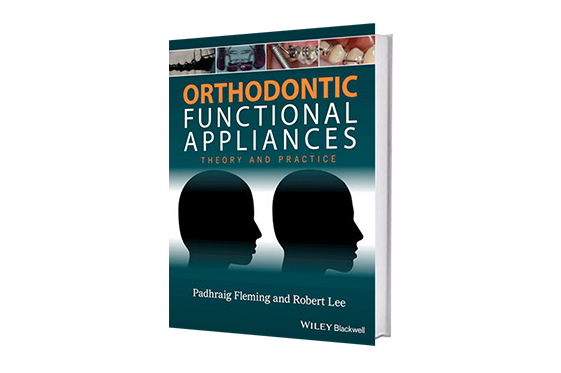Is there one source from which I can learn about the whole spectrum of functional appliances? This is a prudent and expected question a resident or a young orthodontist would ask. Luckily, I have a positive answer!
Today I would like to draw my readers attention to an interesting book that aims to provide a thorough and evidence-based assessment of the most popular Class II functional appliances: Twin Block, Herbst, Forsus, Jasper Jumper, etc. It also briefly covers the use of functional appliances in the correction of Class III malocclusion.

The book was first suggested to me by a British orthodontist, Nicky Stanford, and later gifted by another UK-based colleague and dear friend, Lorenzo Arpaia. For the record, most of the authors and editors are also from the UK.
The text starts with the detailed description of growth and development. Some historic theories and studies are brought to light and contemporary paradigm is discussed. Long story short, we don’t grow mandibles anymore. There is a whole chapter on indictions and case selection where the authors discuss what to look at while opting between one or another type of appliance: age, growth pattern, compliance, etc. Next, we have chapters dedicated to a particular appliance or a particular group of appliances.
I admire the fact that all the statements made are heavily based on research data – this way the book saves a reader a lot of time conveying all the main messages from the most recent RCTs and systematic reviews in just about 150 pages. There is a good number of step-by-step documented cases, but to my great regret the authors fail to provide any cephalometric information of these patients. My experience suggests that incisor inclinations, cephalometric A-P and vertical parameters are very critical in planning the treatment with functional appliances. Therefore, I hope this issue will be addressed in the next edition.
Despite the mentioned drawback, I think this book is still the best source to gain an up-to-date knowledge on functional appliances. It is short, laconic and has no bias.
Finishing this blog post, I would also like to give two short recommendations on Class II correction based on my clinical experience :
- The inclination of the lower incisors is perhaps the most critical factor during the treatment planning stage of Class II cases: using functional appliances on a patient with an increased IMPA without premolar extractions doomed to failure. Any such appliance will only increase the IMPA value introducing the unwanted CW rotation of the mandible.
- In the end of the treatment, please make sure you moved the teeth, not just postured the mandible forward. Dual bite is a very common and very unpleasant condition. Superimpose your cephalograms if uncertain.
You can buy your copy of the book clicking this link. Please note: this is an affiliate Amazon link. Small bonuses I have from this helps me to support Orthodontic Grammar project, whereas you pay just a regular price and not a dime more.
You may also be interested in my video review of this book:
